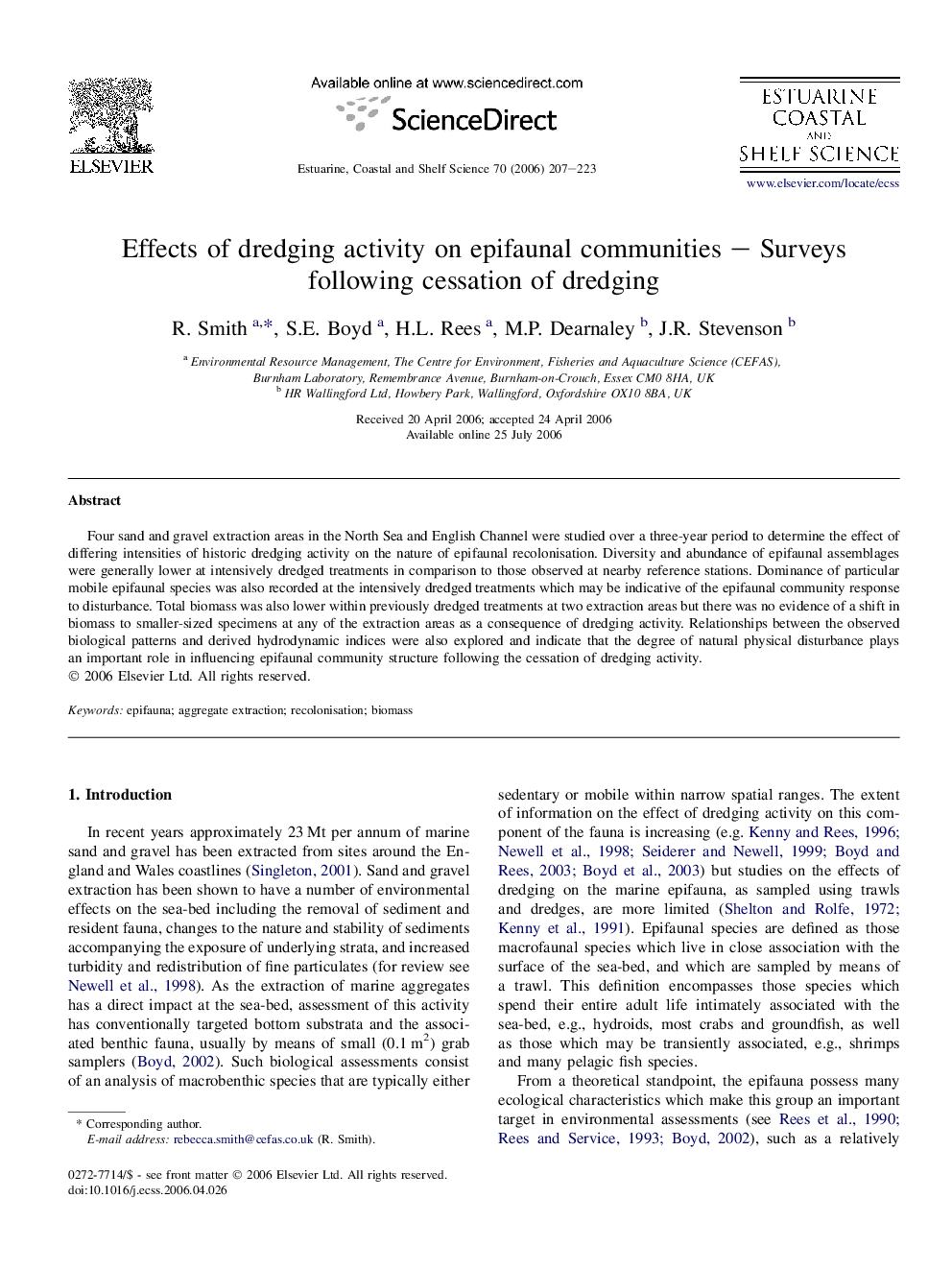| Article ID | Journal | Published Year | Pages | File Type |
|---|---|---|---|---|
| 4542473 | Estuarine, Coastal and Shelf Science | 2006 | 17 Pages |
Four sand and gravel extraction areas in the North Sea and English Channel were studied over a three-year period to determine the effect of differing intensities of historic dredging activity on the nature of epifaunal recolonisation. Diversity and abundance of epifaunal assemblages were generally lower at intensively dredged treatments in comparison to those observed at nearby reference stations. Dominance of particular mobile epifaunal species was also recorded at the intensively dredged treatments which may be indicative of the epifaunal community response to disturbance. Total biomass was also lower within previously dredged treatments at two extraction areas but there was no evidence of a shift in biomass to smaller-sized specimens at any of the extraction areas as a consequence of dredging activity. Relationships between the observed biological patterns and derived hydrodynamic indices were also explored and indicate that the degree of natural physical disturbance plays an important role in influencing epifaunal community structure following the cessation of dredging activity.
